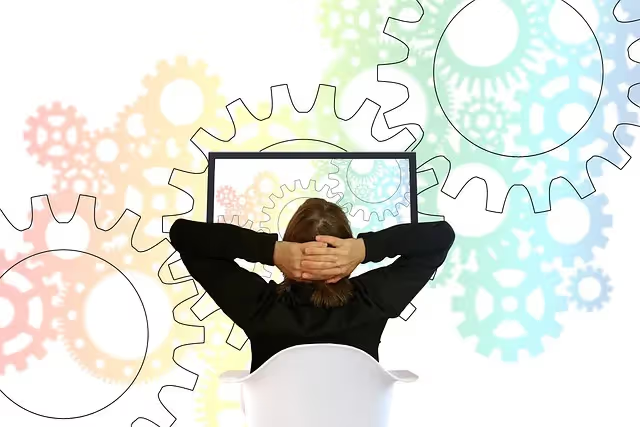AI vs. Virtual Assistants: Who Wins the Productivity Battle?
As artificial intelligence (AI) rapidly evolves, businesses and entrepreneurs are exploring ways to streamline operations and enhance efficiency. One area where AI is making waves is in the world of virtual assistants. But can AI productivity bots replace human virtual assistants (VAs)? Or do human VAs still hold an edge?
Let’s examine the capabilities, limitations, and future of AI-powered assistants compared to traditional virtual assistants.
Understanding AI Productivity Bots
AI productivity bots are software-driven programs designed to automate tasks, assist with administrative work, and enhance efficiency. These AI-driven assistants leverage machine learning, natural language processing (NLP), and automation to perform various functions.
Some common AI-powered virtual assistant tools include:
- Voice assistants like Siri, Alexa, and Google Assistant
- AI chatbots for customer support
- Automated scheduling and calendar management tools
- AI-driven email sorting and response suggestions
- Smart workflow automation systems
What Tasks Can AI Productivity Bots Handle?
AI virtual assistants have become increasingly capable and can efficiently manage several business tasks, including:
- Automating email responses and inbox management
- Scheduling meetings and organizing calendars
- Providing customer support through chatbots
- Generating reports and data analysis
- Transcribing meetings and summarizing notes
- Managing social media posts and engagement
- Processing online orders and invoices
With AI rapidly improving, it’s clear that these automated systems can handle repetitive and data-based tasks with remarkable accuracy and speed.
Where Human Virtual Assistants Excel
Despite AI’s progress, human virtual assistants still have advantages over AI productivity bots in certain areas:
- Emotional Intelligence: Human VAs can interpret emotions, handle complex customer interactions, and provide personalized responses.
- Problem-Solving: AI follows patterns and pre-defined rules, but human VAs can think critically and solve unique problems.
- Creativity: When it comes to content creation, brainstorming, and brand voice alignment, human assistants bring a creative touch AI cannot match.
- Flexibility & Adaptability: AI bots operate based on predefined functions, but human VAs can adapt quickly to new situations and changing business needs.
- Strategic Thinking: Virtual assistants can proactively suggest process improvements, marketing strategies, and business growth opportunities.
Limitations of AI Productivity Bots
While AI-powered virtual assistants bring automation and efficiency, they have limitations that hinder complete human replacement:
- Lack of Emotional Understanding: AI can analyze sentiment but doesn’t truly understand emotions, making it less effective in customer service.
- Struggles with Complex Tasks: AI productivity bots work best with repetitive, structured tasks but may struggle with complex decision-making.
- Limited Context Awareness: AI lacks deep context comprehension, which can lead to inaccurate or inappropriate responses.
- Security and Privacy Risks: AI assistants process sensitive data, and without proper security protocols, businesses risk data breaches.
- Lack of a Human Touch: Clients and customers often prefer human interaction, especially for personalized services.
The Future of AI and Virtual Assistants
AI’s impact on virtual assistants will only grow stronger as technology advances. However, rather than completely replacing human VAs, AI productivity bots will complement them.
Future trends include:
- Hybrid Workforces: Businesses will increasingly use AI productivity bots for automation alongside human virtual assistants for high-value tasks.
- AI-Enhanced Virtual Assistants: Human VAs may start using AI tools to enhance efficiency, automate repetitive tasks, and focus on strategic work.
- Increased AI Personalization: AI bots will become more customized, learning individual preferences and enhancing interactions.
- Advancements in Emotional AI: AI will improve in detecting emotions and responding more naturally, bridging the gap between human and machine interactions.
Should You Choose AI or a Virtual Assistant?
The choice between AI-driven virtual assistants and human VAs depends on your business needs.
When AI is the Better Choice:
- If you need automation for repetitive tasks like scheduling and email management
- If cost-saving is your priority and you need 24/7 availability
- If your work involves data-heavy tasks that require accurate processing
When a Human Virtual Assistant is the Better Choice:
- If your tasks require critical thinking, creativity, or strategic planning
- If customer interaction demands emotional intelligence
- If you need adaptability and flexibility in handling tasks
Final Thoughts: The Best of Both Worlds
AI productivity bots are revolutionizing the way businesses manage tasks, offering time-saving and cost-effective solutions. However, while AI virtual assistants outperform in automation and speed, human VAs remain unmatched in emotional intelligence, creativity, and adaptability.
Rather than replacing human VAs, AI will serve as a powerful assistant, allowing virtual assistants to focus on high-value, strategic work. The future of productivity will likely involve a blend of AI-driven automation and human expertise.
Whether you choose AI, a virtual assistant, or a hybrid approach, the key is aligning your choice with your business goals to ensure maximum efficiency and growth.
















.svg)



